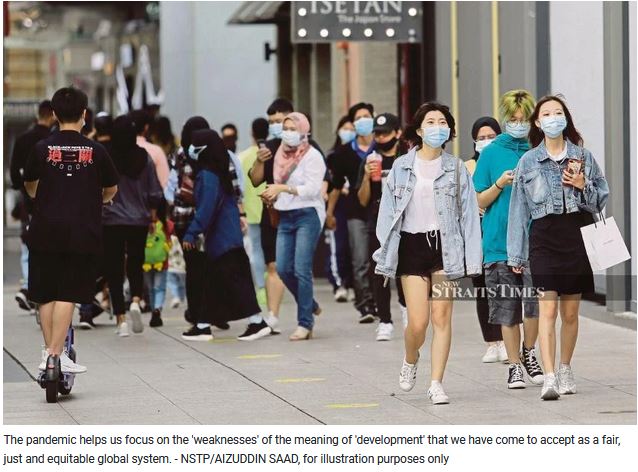Covid-19 helps reveal global developmental weaknesses
Opinion - New Straits Times
September 10, 2020

SOME five years ago this month, the United Nations General Assembly unveiled its Sustainable Development Goals (SDGs) global agenda.
It is endorsed by heads of states worldwide, including Malaysia, for a period of 15 years from 2016-2030.
The SDGs are synonymous with the Education 2030 agenda. Its overarching reach is to balance "Planet, People and Prosperity through Partnership for Peace" (5Ps) in regaining sustainability for future generations.
It works around the 5Ps by connecting all the dots based on Education for Sustainable Development (ESD).
In the coming weeks until March next year, a United Nations Educational, Scientific and Cultural Organisation Online Symposium on the transformative power of ESD will be conducted to further explore the subject.
This means that by then, in less than a decade, we need to figure out how best to embed sustainability in education so that we can live sustainably.
This seems viable considering what was learnt during the UN Decade of ESD launched in 2005 until 2014. By the time it ended, a conference in Japan was informed that ESD had gathered interest among educators and educational institutions throughout the globe.
In part, this is due to the establishment of the Regional Centre of Expertise (RCE) on ESD beginning in 2005 with seven pioneering RCEs as a new model to assert the transformative power of ESD.
Now that the number of RCE has grown close to 200, the transformation is being felt in many places internationally.
The RCEs spearheaded a new structure of education befitting the demands and needs of ESD, including that of research and community engagement in reorienting teaching and learning.
The goal is to model a more appropriate structure to mainstream ESD for the future of education and lifestyles. The present preoccupation with global warming and climate change are centred on technological disruptions rather than a human-centric one.
They are by and large billed in terms of socio-economic imbalance globally — not of human life and dignity.
While many are eager to jump on the bandwagon in the belief that technology is a long-term solution to their problems, the Covid19 pandemic proves otherwise.
For example, the 4th Industrial Revolution project that was announced at the 2016 World Economic Forum in Davos.
As it entered the conversation at around the same time as the SDG 2030 agenda, the issue of sustainability had never been addressed seriously.
It captured interest among world leaders due to its hitech attraction, which is tied to economic gains.
Almost in parallel, the term Education 4.0 is coined to provide "technological-based" solutions to problems like poverty, hunger and inequality — all crafted in the language of SDGs.
The irony is that technology is linked to many of the divides that lead to today's state of unsustainable future.
This is not new as it can be traced to the First Industrial Revolution in Europe in the 1700s, with all the downsides, including ecological degradation and slavery and slave-trading.
The latter is highlighted by protests launched under the banner of systemic racism, sexism and colonialism in many parts of the developed North.
The pandemic helps us focus on the "weaknesses" of the meaning of "development" that we have come to accept as a fair, just and equitable global system.
We even aspire to make it as part of the global system. In so doing, the 5Ps have been put on the back burner.
It is, therefore, time to refocus our effort in shifting the narrative towards a human-centric one — where the 5Ps are the transformative forces in translating ESD into reality for a sustainable future.
Covid-19 has reinforced the need for this if the survival of the planet and its inhabitants are to have a fighting chance. The choice is entirely ours.
The writer, a New Straits Times columnist for more than 20 years, is International Islamic University Malaysia rector
